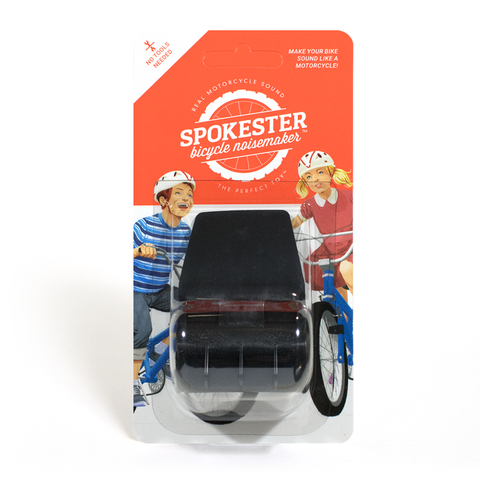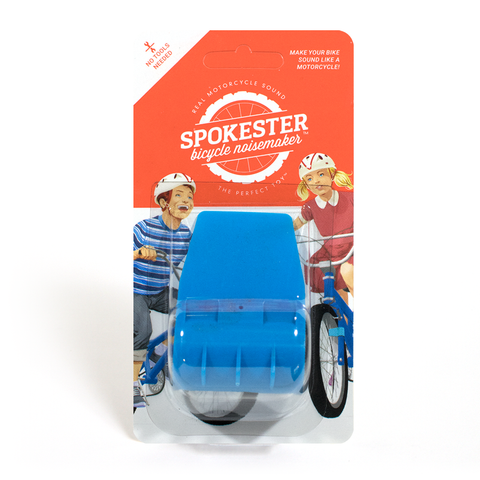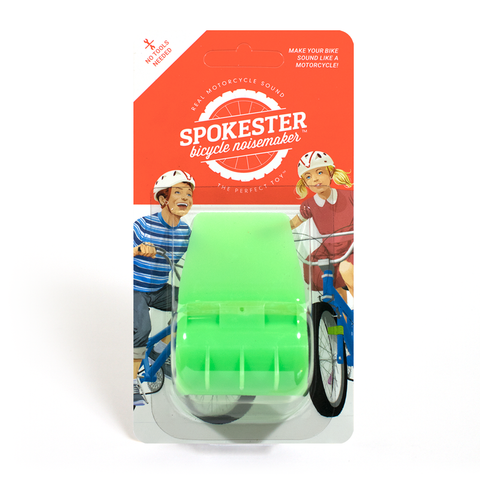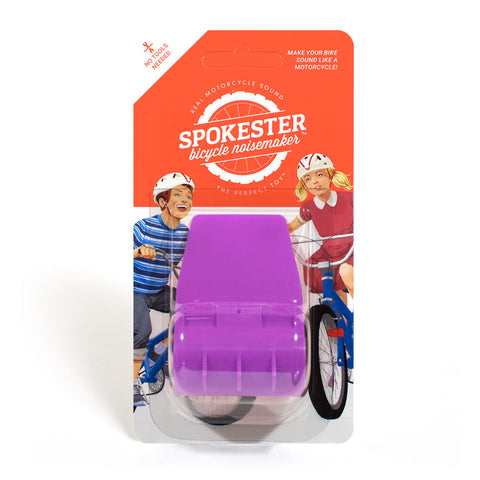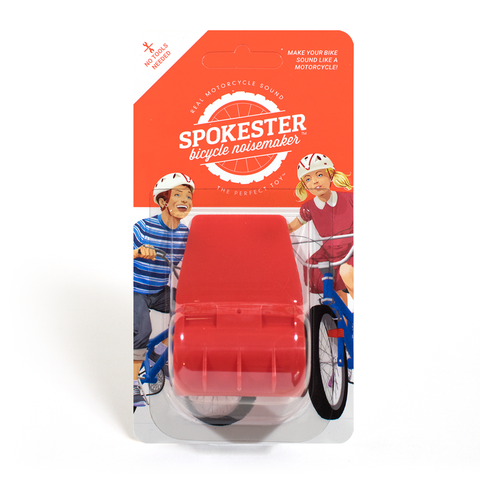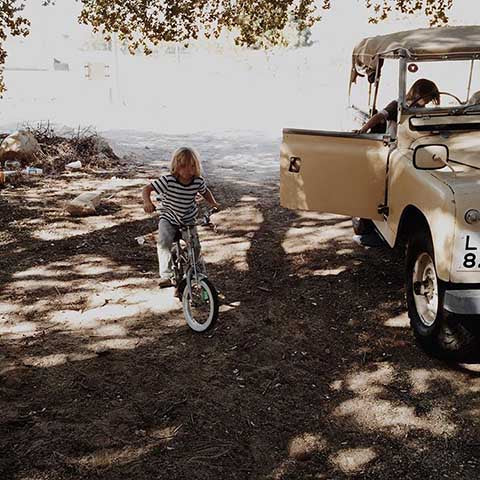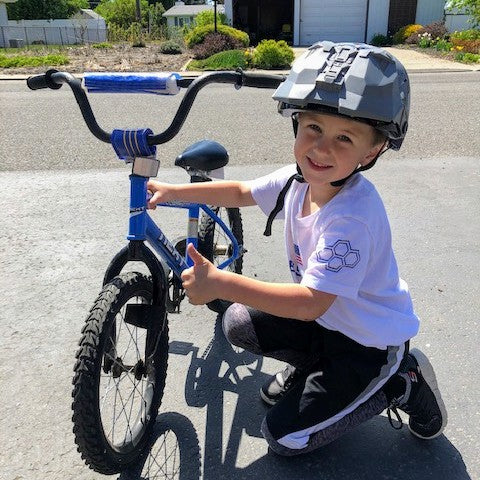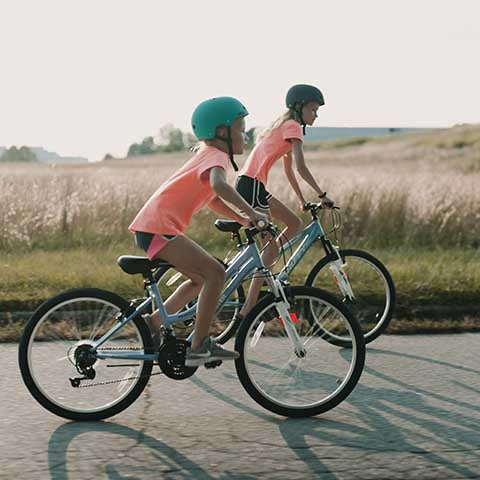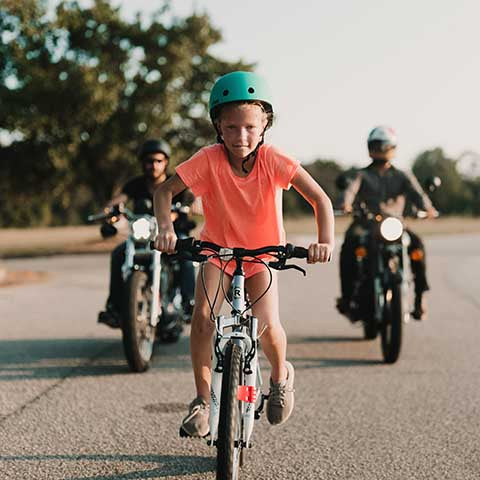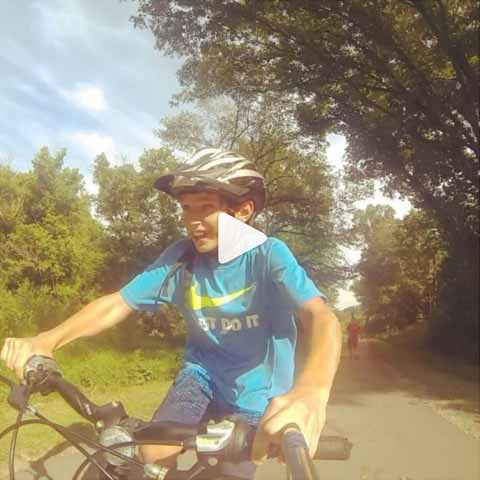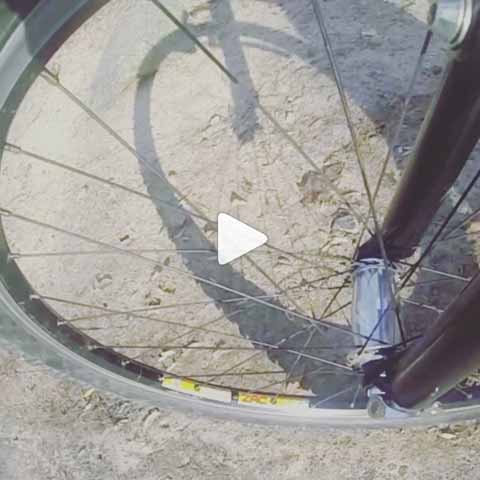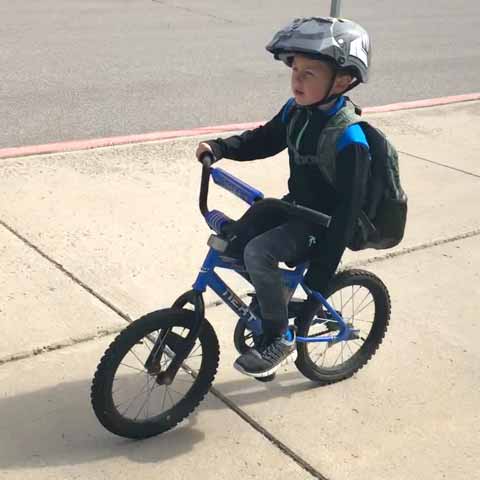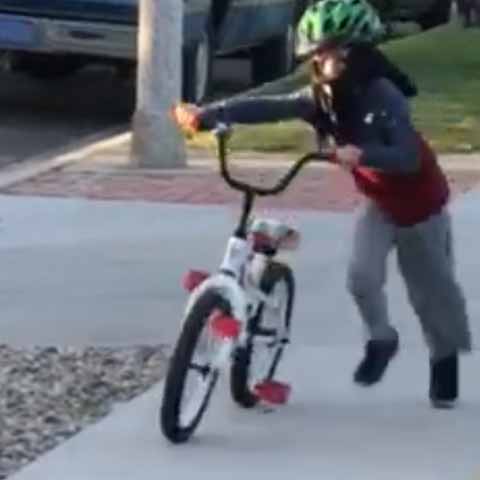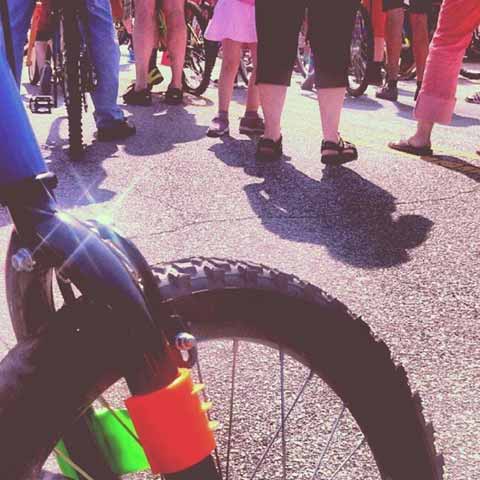A Parent's Introduction to Serious Mountain Biking
Who didn't just love playing in the woods when they were kids? Climbing trees, hopping streams, taunting wild animals… that's what made summer summer, right?
And just when you thought life couldn't possibly get any better despite the vast majority of it still left, you figure out you can take your Huffy WITH YOU into the unknown! Little did you know that you had just taken your first steps into the exciting world of mountain biking.
These days, you've got budding little ones of your own with a lust for adventure and a knack for tearing up the lawn on their two-wheeled way to the trees. Before you know it, their birthday wish list could even evolve from dolls and action figures to CamelBaks and Trek bikes.
Fear not, this epidemic isn't limited solely to your household. Mountain biking has taken off in a big way since you were a tyke. If MTBing has never really been your thing, we're happy to offer a proper intro. Our post on kids' mountain bikes talks about what separates these guys from road bikes, BMXs, and other models while offering tips on how to segue younger riders into this kind of action. Here, we take a look at mountain biking as both a competitive sport and leisure activity for families as the kids start to get older.
Competitive Mountain Biking
At some point, your children's passive enjoyment of hopping rocks on the weekends may very well transition into active pursuit of trail glory. If that happens, it's best to know the difference between things like 4X and XC lest you catch a roll of the eyes at home or, heaven forbid, let slip an embarrassing faux pas in front of their friends.
MTBing as a formal affair comes in various shapes and sizes. We'll give you the skinny on five of the most common disciplines you'll run into out there.
Cross Country
In an action sport that many deem to be extreme, cross country (XC) mountain biking is the "mildest" racing style, which is probably why it's also the most popular. Don't let this fool you, though. XC requires excellent bike-handling skills to navigate all types of forest-based terrain. Like cross-country running and skiing, it also means serious riders must be very fit to make it across long distances.
XC races can be several miles long and are marked by constantly-changing tracks: climbing and descending, varying single-track widths, technical turns and obstacles. As you get better, you graduate to races for more experienced riders that involve more laps and longer finishing times (up to several hours).
Your kid more the Knievel type? We've got just the thing…
Downhill
If XC is low on the extreme scale and high on length, downhill (DH) is its polar opposite. DH racing is straight up all about speed, making it one of the more exciting cycling sports to watch. Riders need to have great bike control and handling skills, quick reaction time, and nerves of steel.
Racers compete one at a time against the clock. Their bikes typically have both front and rear suspension given the bone-jarring effects of maneuvering over steep jumps, sudden drop-offs, and rocky ground on their way to the bottom. Needless to say, helmets and other safety equipment are a must.
A little too intense for them (or probably more likely, you)? Okay, okay, let's take a different angle then…
Four Cross
In four cross (4X) mountain biking, riders make their way across a specially-designed course featuring a variety of challenges. You'll hear your kids dropping names like "off-camber corners," "table tops," "stutter bumps," and other similar terminology that really only serves to further widen the generation gap. Suffice it to say that they're referring to both natural and man-made obstacles that together add more spice to an already-steep descent.
Typical 4X competition involves short races in round-by-round knockout format. Within each round, riders compete in a series of heats—or "Motos"—in order to move on to the quarter- and semi-finals. The remaining four riders then vie for the crown.
Got a little more time on your hands each week? All right, let's stretch things out…
Enduro
Originating in France in the early 2000s, the enduro or "all-mountain" style of MTBing weaves in a more adventurous thread. Enduro is similar to XC in setup, but with bigger jumps and more technical sections. The drop-offs and rugged terrain make full-face helmets and various pads for your chest, knees, elbows, etc. a very good idea. Competitions can last multiple days and are made up of three to six stages with timed descents. Complete them in the fastest combined time to go home with more gold for your trophy case.
Enduro racing takes place in a few different formats. "Big mountain" is a longer version of a DH course with some uphill sections depending on the event. "Gravity" is uphill and downhill, and even though the ascents aren't timed, there's a time limit on reaching the top of each hill. "Super-D" features lengthy ascents and descents, with the latter being more technical in nature.
Still not adventurous enough for your little pioneers? Then they better know how to use a GPS…
Orienteering
If you're familiar with orienteering, then mountain biking orienteering (MTBO) won't require much explanation. In fact, MTBO is one of the International Orienteering Federation's four main categories (the others being foot, ski, and trail). In short, MTBO is essentially XC mountain biking with a map and compass. It combines strength, skill, and smarts since riders must be able to use detailed topographic maps, memorize routes, and make quick decisions to navigate the course.
Participants can pair up or ride solo. Either way, they score by finding as many checkpoints—or "control points"—as possible within the allotted time (usually a couple hours). If multiple people find all of the controls, the person/team with the fastest time conquers all. MTBO shares a number of traits with adventure racing, minus the trekking poles and kayaks.
Mountain Biking's Emergence on the Youth Scene
Cross country mountain biking's debut in the Olympics in 1996 was certainly a major milestone for the sport. But perhaps more telling is the explosive rise of organized MTBing at the youth level over the past decade. Thanks to governing bodies like the National Interscholastic Cycling Association (NICA), backwoods cycling is one of the nation's fastest-growing sports.
Founded in 2009, NICA's mission is to develop MTB programs for student-athletes across the US. As of 2018, it has established state-level leagues in 24 states (including two in California) that have drawn in over 22,000 youngsters. One of the most appealing aspects of NICA leagues is the fact that everyone who signs up can race. In other words, forget tryouts, JV/varsity levels, and starters versus bench players.
To further encourage participation, they offer spring and fall seasons for athletes playing multiple sports. Don't have a bike? No problem. NICA works with sponsors to provide equipment for kids who aren't able to bring their own. These aren't just local Mom & Pop stores (love you guys, though!), we're talking about big-time brands like Shimano, REI, CLIF, and a bunch of other industry heavyweights.
In an interesting yet highly-positive twist, NICA directors are finding that their leagues are often introducing people to bikes for the very first time. And these aren't limited solely to the little dependents in the household, either. Parents are following their lead and getting into the sport once they recognize its benefits:
- Cycling is one of only a handful of sports in which it's realistic for parents to join their kids. Making it a family activity is a great opportunity for quality time outside of the home.
- It's also a fun way to stay in shape. MTBing offers a total-body workout that can burn between several hundred and a thousand calories per hour. Improved strength and cardiovascular health carries over into other aspects of day-to-day life.
- Outdoor activities have been proven to affect emotional well-being, too. This includes things like decreased stress for adults and increased confidence for up-and-comers.
- Mountain biking is a fantastic group activity, with many communities throughout the country offering both organized and informal ride programs. If you think the social aspect of the sport is just a grade-school perk, think again (bikes and beers, anyone?).
- MTBing's popularity extends all over the world. Destination biking has become a serious adventure-travel staple, providing a new kind of sightseeing experience for families here and abroad.
Mountain Biking Trail Tips
So, your interest is piqued and you've decided to fold mountain biking into your family routine. But, you don't know where to start. As with so very many other things, we can help. Here are some pointers to get you going and keep you happy while rolling through the backcountry.
Ease into It
Don't dive into the deep end if you can't swim. Before risking life and limb on a double expert trail, get familiar with the bike. Learn to handle it and become comfortable with the way it feels and rides. Understand variables such as tire inflation, and make sure younger riders are competent using features like hand brakes on flat surfaces first.
Bike parks have popped up all over the place and are great for this. They're making it easier for people to learn in fit-for-purpose environments, with trails designated for all skill levels so you can build up to bigger challenges over time.
Understand the Terrain
You've probably heard the term "single track" thrown around when it comes to MTBs (including here). This is the most common kind of trail. It gets its name from the fact that it's only wide enough for one rider, which also means it's usually a one-way route.
Following the logic, double track refers to trails that are double the width of single track and often on old roads where vehicles have created two sets of tire tracks. Because side-by-side riding is possible here, these trails are less technical than their narrower cousins.
Make Safety a Priority
If you've gotten this far then the following should go without saying: take safety seriously. Combining high speed, rugged surfaces, and close quarters with very large trees and very hard rocks can be a recipe for disaster—but it doesn't have to be!
Start out with your bike safety checklist to make sure everything looks good before you even leave the garage. Then, make sure you've got the right equipment. A facemask and chest protector may not be necessary for everyday trails, but at the very least you (and your kids) should have a solid helmet that fits well plus any other gear necessary for that day's riding.
Become Self-Sufficient
If you or junior pop a tire in the hills, there's a very good chance you may be the only one around who can fix it. Familiarizing yourself with your bike doesn't just have to do with the way it rides. It also means knowing how to handle unexpected issues. No one expects you to re-weld a broken frame on the spot, but carry a repair kit and know how to fix basic snafus.
On that note, also take a first aid kit with you. If you're going on long rides or venturing into remote places, know how to treat common injuries. Again, surgical experience isn't necessary, but be prepared to patch yourself or someone else up if necessary after a spill.
Bring Plenty of Fuel
No, not that kind of fuel (unless you brought your camping stove for an overnighter). We're talking about food and water, folks. Not bringing enough of these—or even worse, none at all—is a rookie move that could make a long day that much longer. With as much energy as you're exerting, you need to continually hydrate and replace those calories or else risk bonking out in the wrong place at the wrong time.
There are all kinds of options out there from enhanced waters and electrolyte drinks to energy bars, chews, and gels to keep you going. Brands like CamelBak and Osprey make small backpacks with hydration reservoirs specifically for activities like these so that you can drink to your heart's delight without hitting the pause button.
Know the Rules
Being prepared to face nature on two wheels extends beyond simply knowing how to use your bike and gear. You also need to be aware of standard MTB guidelines to keep your experience (and that of others) enjoyable and safe. Things like staying on marked trails, not antagonizing wildlife, and taking your trash with you should be common sense, but people never cease to amaze.
To help teach your little ones, check out the International Mountain Biking Association's Rules of the Trail. This does a nice job introducing you to some of the most important intangibles to keep in mind while you're shredding up the countryside.
Looking for that next adrenaline rush? Want to change up the ole fitness routine? Just need a way to get you and the kiddos out of the house for a while? Mountain biking is a good option across the board. And it's not like it's going anywhere anytime soon. Growth at the youth level is expected to continue as organizations like NICA extend their reach into schools. The Outdoor Industry Association estimates that MTBing already contributes tens of billions of dollars to a growing $96 billion cycling industry. In fact, studies show… you know what, who cares, just go out there and get after it!
← Older post Newer post →
